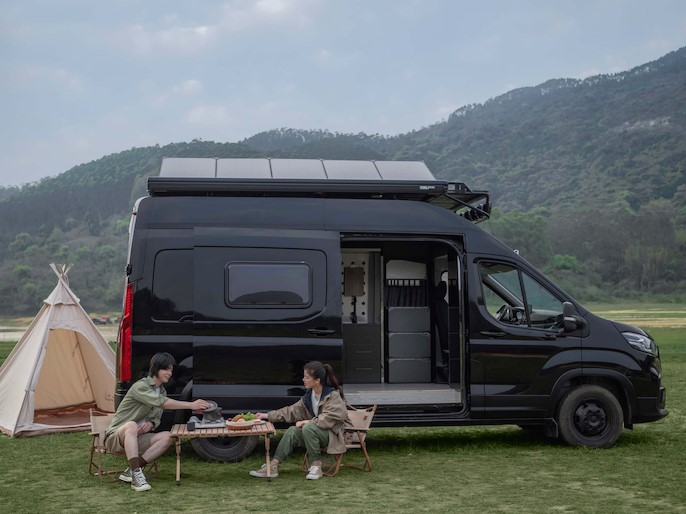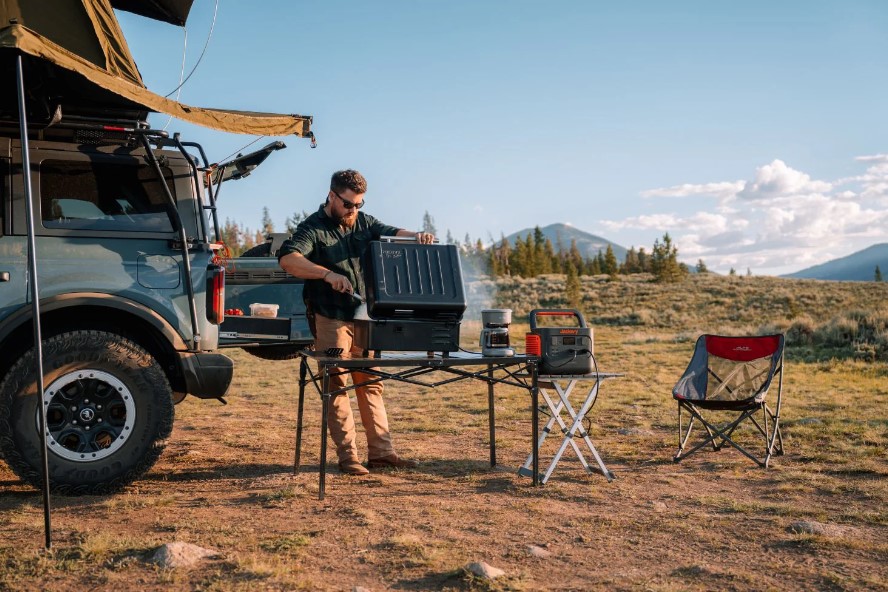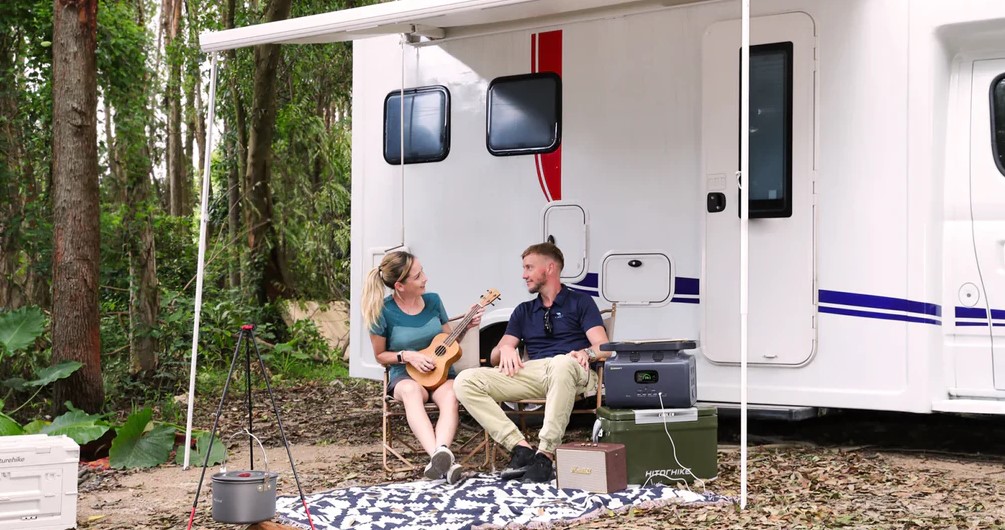As the temperature rises and the sun beats down on your RV during summer road trips, having a reliable air conditioning system becomes paramount for comfort and enjoyment. However, understanding the power consumption of your RV air conditioner is essential for managing energy usage effectively and avoiding potential electrical issues. In this comprehensive guide, we’ll delve into the intricacies of RV air conditioning systems, explore how to determine their power consumption, discuss factors influencing power usage, and provide practical tips for managing energy consumption while staying cool on the road.
Understanding RV Air Conditioners
RV air conditioners come in various types, including rooftop units, window units, and portable units, each designed to provide cooling comfort in different RV setups. These units typically consist of components such as compressors, evaporator coils, condenser coils, fans, and thermostats, working together to extract heat from the interior of the RV and expel it outside. Understanding the basic functioning of these components is crucial for grasping how RV air conditioners consume power.
When it comes to power consumption, the wattage of an RV air conditioner is a key metric to consider. Wattage represents the rate of energy consumption, with higher wattage indicating greater power usage. Determining the wattage requirements of your RV air conditioner is essential for selecting the right unit and managing energy usage effectively.

credit: Ecoflow Blog
Determining Wattage Requirements
To determine the wattage of a specific RV air conditioner, you can typically find this information in the unit’s specifications provided by the manufacturer. Most RV air conditioners have wattage ratings ranging from 1,000 to 3,500 watts, depending on factors such as size, cooling capacity, and efficiency. For example, a small rooftop unit may have a wattage rating of around 1,000 to 1,500 watts, while a larger unit designed for larger RVs may consume 2,500 to 3,500 watts.
When choosing an RV air conditioner, it’s essential to consider your power supply and electrical system’s capacity to ensure compatibility and prevent overloading. Additionally, understanding the wattage requirements allows you to estimate the energy consumption and plan accordingly, especially if you’re relying on a generator or solar power for off-grid camping.
Factors Influencing Power Consumption
Several factors can influence the power consumption of RV air conditioners, including environmental conditions, the efficiency of the unit, and additional features.
Environmental Factors
The environmental conditions surrounding your RV play a significant role in determining how hard your air conditioner needs to work to maintain a comfortable indoor temperature. Ambient temperature, humidity levels, elevation, and climate conditions can all influence the workload and power consumption of your RV air conditioner.
For example, higher temperatures and humidity levels require the air conditioner to run longer and consume more power to achieve the desired cooling effect. Similarly, RVers traveling to high-altitude locations may notice differences in AC performance due to reduced air density and lower oxygen levels.
Efficiency of the AC Unit

Credit: Jackery
The efficiency of your RV air conditioner is another critical factor that can affect power consumption. Energy Efficiency Ratio (EER) and Seasonal Energy Efficiency Ratio (SEER) are metrics used to evaluate the efficiency of air conditioning units, with higher ratings indicating greater energy efficiency.
Choosing an energy-efficient model can lead to long-term cost savings and reduced environmental impact, as these units are designed to provide the same level of cooling while consuming less energy. Additionally, proper maintenance and installation can further enhance the efficiency of your RV air conditioner, ensuring optimal performance and minimal power usage.
Additional Features and Accessories
Modern RV air conditioners often come equipped with various features and accessories designed to enhance performance and energy efficiency. Programmable thermostats allow users to set temperature preferences and schedule AC operation based on specific times of day, optimizing energy usage and comfort levels.
Variable-speed fans provide greater control over airflow and temperature regulation, reducing power consumption while maintaining a comfortable indoor environment. Additionally, newer AC models may offer eco-mode settings and other energy-saving features designed to minimize power usage without sacrificing cooling performance.
Size and Capacity of the AC Unit
The size and capacity of your RV air conditioner also play a significant role in determining power consumption. Choosing the right-sized unit for your RV ensures optimal efficiency and performance, as oversized or undersized units may lead to energy wastage and reduced comfort levels. Larger RVs may require multiple air conditioning units to adequately cool the interior space, with each unit consuming power proportionate to its size and cooling capacity. Properly sizing your RV air conditioner based on the dimensions and layout of your RV is essential for minimizing energy costs and maximizing comfort during travel.
Insulation and Ventilation
The insulation and ventilation of your RV can significantly impact the workload and power consumption of your air conditioner. Proper insulation helps minimize heat transfer and maintain a consistent indoor temperature, reducing the workload on the AC unit and saving energy. Adequate ventilation ensures airflow throughout the RV, allowing the air conditioner to distribute cool air effectively and maintain optimal comfort levels. Sealing air leaks and minimizing drafts can further enhance energy efficiency by preventing hot air from entering the RV and reducing the need for constant cooling.
Usage Patterns and Habits
Finally, your usage patterns and habits also play a crucial role in determining power consumption in RV air conditioners. Factors such as the frequency and duration of AC operation, temperature preferences, and lifestyle habits can all influence energy usage and costs. By optimizing AC usage and adopting energy-saving practices, such as setting thermostat temperatures wisely, scheduling AC operation during off-peak hours, and utilizing alternative cooling methods when possible, RV owners can minimize power consumption and reduce their environmental footprint while enjoying a comfortable travel experience.
Managing Power Usage
To manage power usage effectively while using RV air conditioners, consider implementing the following tips and strategies:
Optimize thermostat settings: Set the thermostat to the desired temperature and avoid excessive cooling, which can lead to unnecessary energy consumption.
Maintain proper insulation: Ensure your RV is adequately insulated to minimize heat transfer and reduce the workload on the air conditioner.
Use window coverings: Install reflective window coverings or shades to block out direct sunlight and reduce heat gain inside the RV.
Park strategically: Park in shaded areas or use awnings to minimize sun exposure and help keep the interior temperature cooler.
Schedule AC usage: Use the air conditioner during off-peak hours or when ambient temperatures are lower to reduce energy consumption and strain on the electrical system.
Consider alternative cooling methods: Supplement RV air conditioning with portable fans, ceiling vents, or natural ventilation to reduce reliance on the AC unit and conserve energy.
By implementing these energy-saving practices and staying mindful of power consumption, RV owners can enjoy a comfortable and enjoyable camping experience while minimizing their environmental footprint and energy costs.
Conclusion
Understanding the power consumption of RV air conditioners is essential for managing energy usage effectively and optimizing the RVing experience. By familiarizing yourself with the basics of RV air conditioning systems, determining wattage requirements, considering factors influencing power consumption, and implementing energy-saving strategies, you can stay cool and comfortable on the road while minimizing environmental impact and energy costs. Whether you’re embarking on a cross-country adventure or enjoying a weekend getaway, staying informed and proactive about RV air conditioner power usage ensures a more enjoyable and sustainable camping experience.

